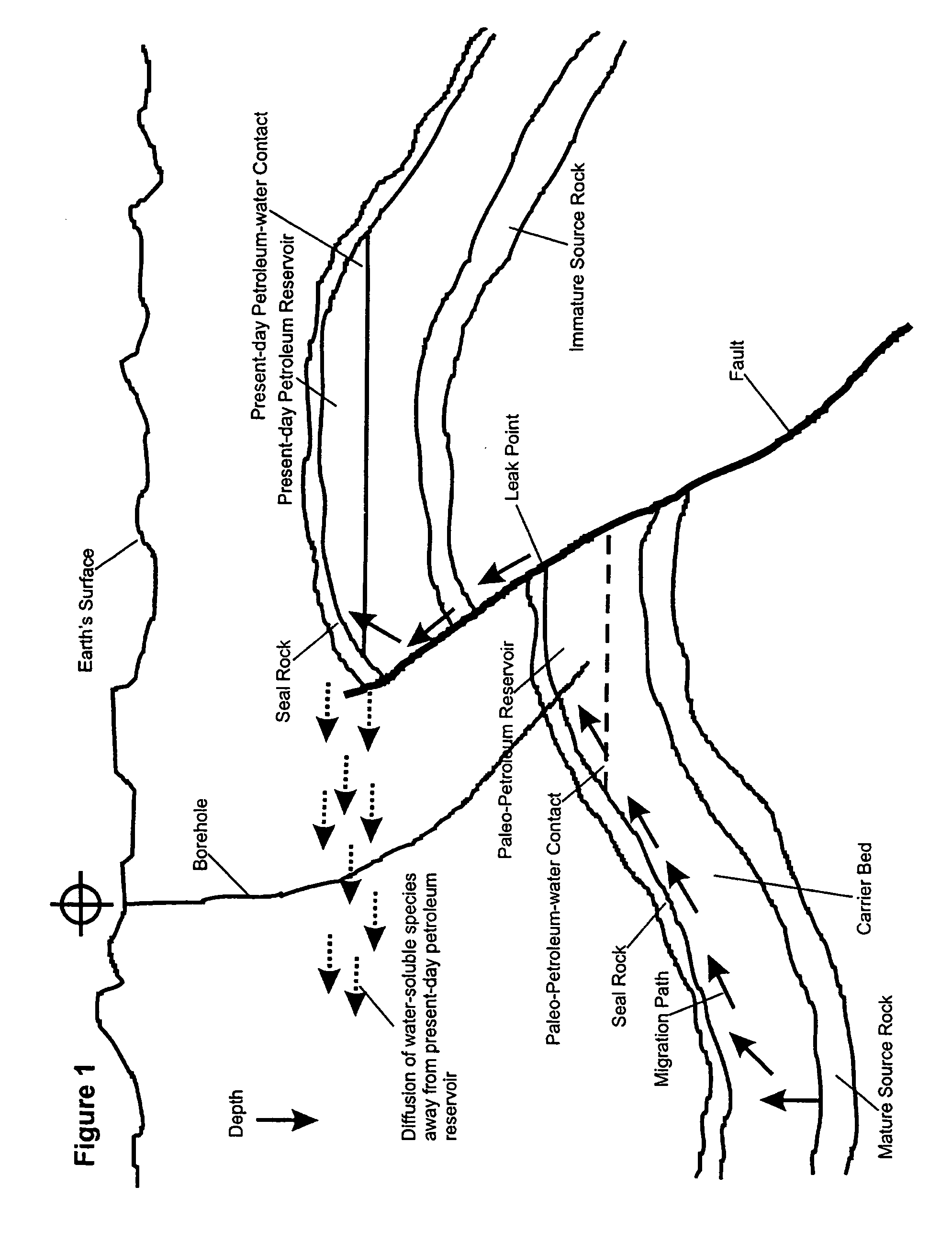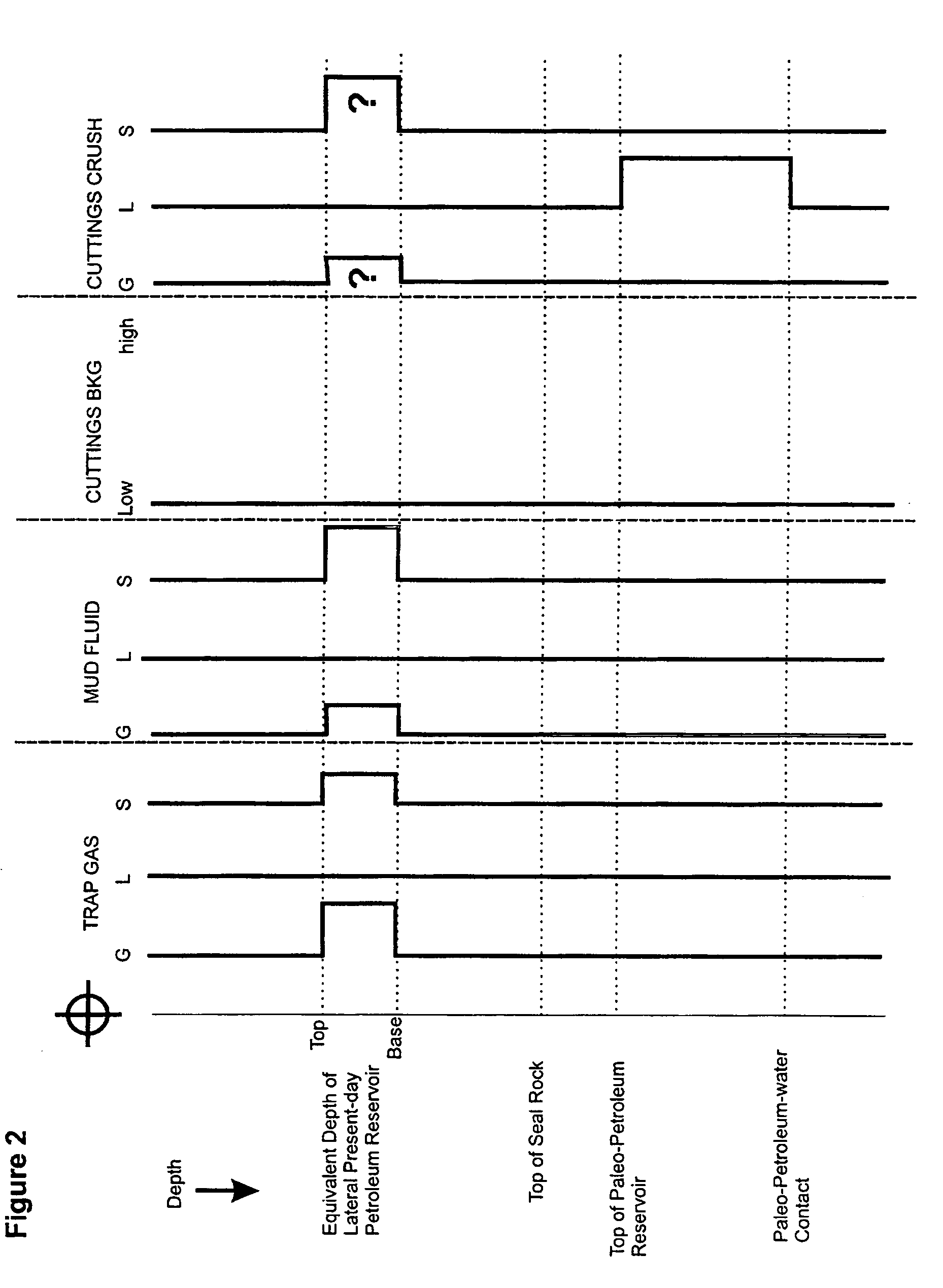Method and apparatus for determining gas content of subsurface fluids for oil and gas exploration
a technology of subsurface fluids and gas content, which is applied in the direction of survey, well accessories, borehole/well accessories, etc., can solve the problems of non-economic petroleum residue within macro or microporosity in reservoir sections, current methods provide a very incomplete record of above-described subterranean fluid history recorded by borehole and cuttings volatiles, and it is difficult to distinguish between wet gas, condensate and oil with current gc based instruments
- Summary
- Abstract
- Description
- Claims
- Application Information
AI Technical Summary
Benefits of technology
Problems solved by technology
Method used
Image
Examples
Embodiment Construction
[0046]The embodiments discussed herein are merely illustrative of specific manners in which to make and use the invention and are not to be interpreted as limiting the scope of the instant invention.
[0047]While the invention has been described with a certain degree of particularity, it is to be noted that many modifications may be made in the details of the invention's construction and the arrangement of its components without departing from the spirit and scope of this disclosure. It is understood that the invention is not limited to the embodiments set forth herein for purposes of exemplification.
[0048]It is desirable to have a record of mass to charge ratio (MCR) for a borehole volatiles and / or cuttings volatiles sample that reliably permits comparison of compounds represented by one or more MCR to one or more others.
[0049]According to one aspect of the invention, there is provided a mass spectrometry (MS) system for producing such a reliable record. The MS system is configured a...
PUM
 Login to View More
Login to View More Abstract
Description
Claims
Application Information
 Login to View More
Login to View More - R&D
- Intellectual Property
- Life Sciences
- Materials
- Tech Scout
- Unparalleled Data Quality
- Higher Quality Content
- 60% Fewer Hallucinations
Browse by: Latest US Patents, China's latest patents, Technical Efficacy Thesaurus, Application Domain, Technology Topic, Popular Technical Reports.
© 2025 PatSnap. All rights reserved.Legal|Privacy policy|Modern Slavery Act Transparency Statement|Sitemap|About US| Contact US: help@patsnap.com



